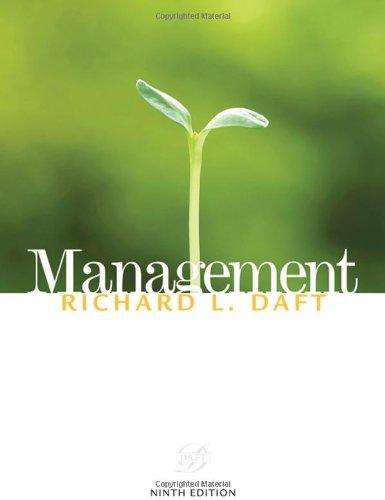When Preserve set out to differentiate itself from its conventional counterparts, it had no idea how successful
Question:
When Preserve set out to differentiate itself from its conventional counterparts, it had no idea how successful the company would become. Founded in 1996 by Eric Hudson, Preserve currently makes a line of eco-friendly, high-performance, stylish products for your home. The product line includes personal care items such as the Preserve toothbrush, as well as tableware and kitchen items.
Preserve’s materials may be recycled, but its strategy is completely new. By offering products that make consumers feel good about their purchases, Preserve not only created products of higher value, it also introduced fresh new ideas in the industry. Strategic thinking played a role in many pivotal decisions throughout Preserve’s gradual ascent. Unlike many American companies, Preserve chose to grow slowly at first, taking time to understand and develop its core competencies. As consumers requested more eco-friendly products, Preserve responded by producing its eco-friendly line of products. The company’s restraint paid off, because when Hudson and his senior management team decided it was time for expansion, Preserve was ready.
One Earth Day in Boston, an employee from Stonyfield Farm Yogurt approached Preserve to ask if the company had a use for the scrap plastic from manufacturing yogurt containers. Preserve quickly decided to partner with Stonyfield Farm Yogurt. The scrap plastic is now used to create several Preserve products, including the Preserve toothbrush, tongue cleaner, and razors.
To become a major force in consumer product goods, Preserve had to continue to focus on its diversification strategy. Given Preserve’s emerging corporate-level strategy to manufacture well-designed products made from recycled plastic, the company knew the possibilities were endless. Overflowing with product ideas and feeling pressure to deliver well-designed products, the senior management team members knew they needed to bring in an outside industrial design fi rm.
After a brief meeting, Preserve selected Evo Design, LLC, a product design fi rm founded in 1997 by Tom McLinden and Aaron Szymanski. It boasted full service new product design and strategy including: Product Research, Product Strategy, Product Design Training, Project Leadership, Opportunity Assessment, Industrial Design, Human Factors, User Controls, Model Making, Product Color and Graphics, Rapid Prototyping, Engineering, Manufacturing recommendations and support. The company also had an impressive client list including Supersoaker, Hasbro, Mattel, LeapFrog, Graco, Safety and Evenflo. Preserve realized that increasing demands for earth-friendly toys and baby products presented an amazing opportunity for the company and knew that a partnership with Evo Design would be a great fit.
Although partnerships with Stonyfield Farm and Evo Design have yielded amazing results, Preserve wouldn’t be where it is today without Whole Foods. “Our company was born in the natural channel,” said C. A. Webb, director of marketing for Preserve. “Whole Foods has been our number one customer. Not only have they done an amazing job of telling our story in their stores; they are the ultimate retail partner for us because they are so trusted. Customers have a sense that when they enter a Whole Foods market, every product has been carefully hand selected in accordance with Whole Food’s mission.”
In 2007, Whole Foods and Preserve launched a line of kitchenware, which included colanders, cutting boards, mixing bowls, and storage containers. “Together we did the competitive research, we specced out the products, and we developed the pricing strategy and designs,” Webb said. “It created less risk on both sides.” The relatively tiny Preserve was able to take an untested product and put it in the nation’s largest and most respected natural foods store, which in turn used its experience and resources in the channel to ensure the product sold well. “We gave Whole Foods a 12-month exclusive on the line,” Webb said, “which in turn gave them a great story to tell.” How’s that for a business-level strategy guaranteed to thwart the competition?
Through its amazing partnership with Whole Foods, Preserve was able to build on its strengths in supply chain management in preparation for bigger partners in bigger markets, which included rolling out a new line at Target.
Discussion Questions
1. What possible weaknesses or threats could impede Preserve’s chances at a fully successful joint venture with Target?
2. In the future, which strategy is Preserve more likely to adopt: related diversification or unrelated diversification? Please explain your answer.
3. How does the BCG Matrix apply to Preserve’s product line?
Step by Step Answer:






